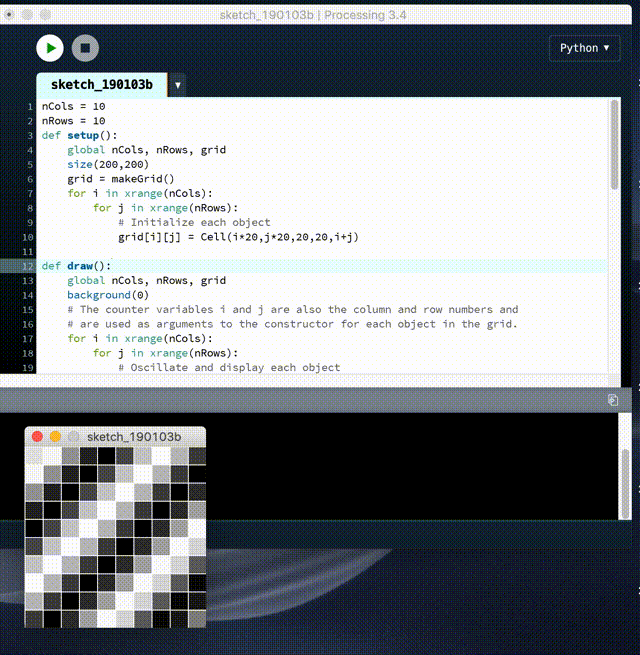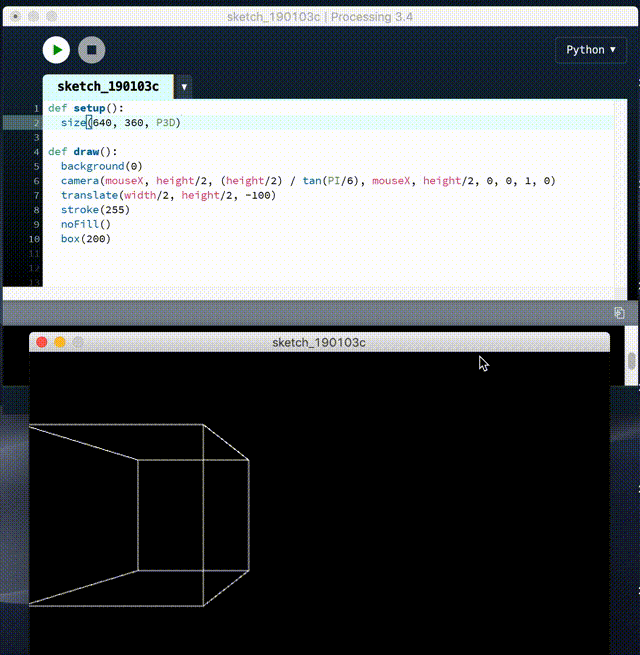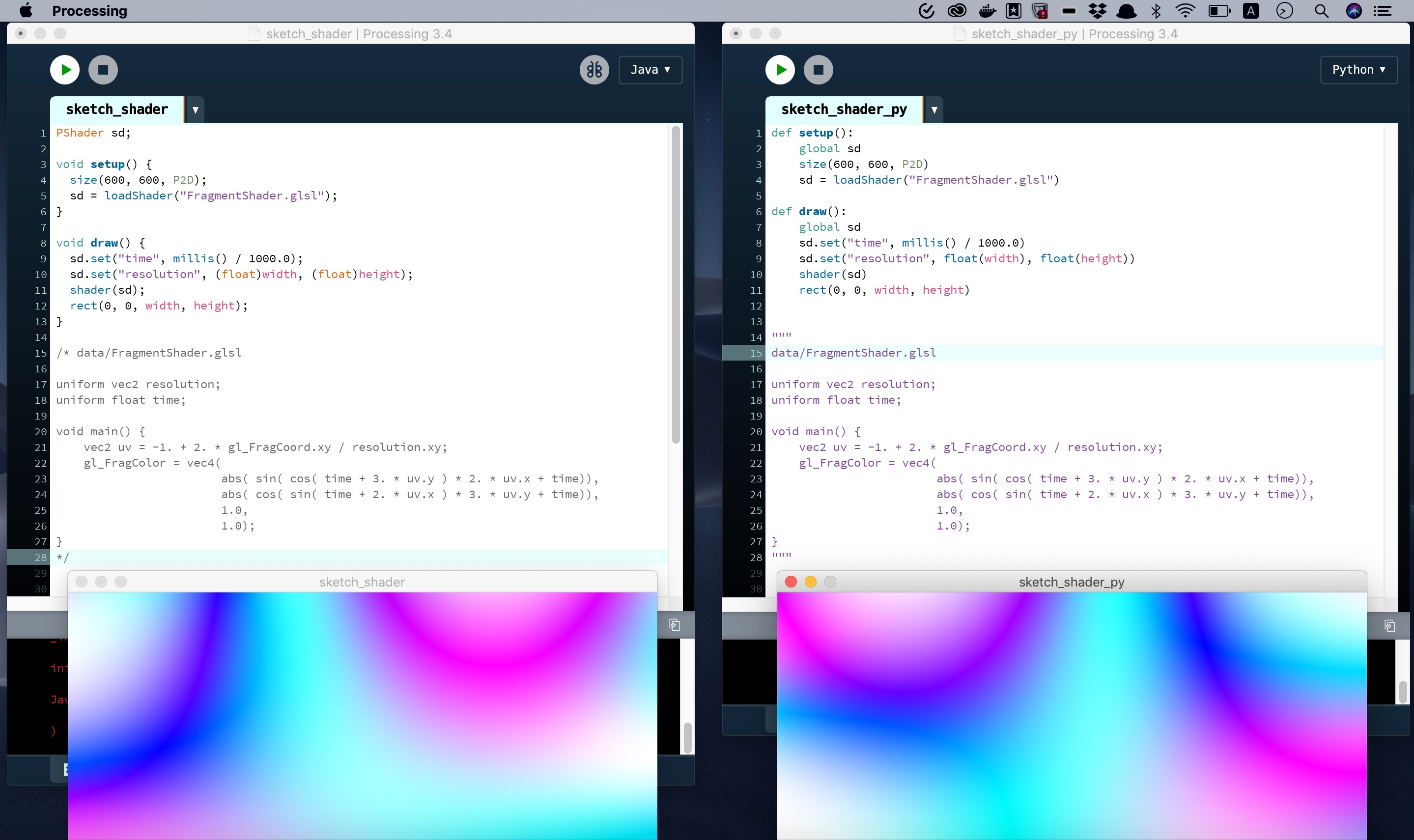[JAVA] 5 Reasons Processing is Useful for Those Who Want to Get Started with Python
Introduction
Processing is famous as a Java-based tool that even beginners of programming can easily learn, but I found it to be a very useful tool for those who want to start Python, so I summarized the reason.
Why Processing is so convenient
❶ Easy environment construction
Originally, Processing is a Java-based tool that enables visual representation with very little code. As a result, installation is also fairly easy. This time, just install the Python IDE after the normal Processing installation.
Click here to download Processing (both Windows Mac can be used) https://processing.org/download/
Install Python mode (this link is easy to understand with images) https://pycarnival.com/processingpy1/
❷ Easy to visualize

In order to learn the basic loop processing of Python and how to create classes, it is convenient to be able to visualize how each works, but since Processing is specialized for drawing, how the repetition is reflected in the processing. It is convenient to see if.
❸ Easy handling of key mouse input, etc.
I often use opencv to handle key input and mouse input in python, cv2.waitKey is unresponsive and it's hard to explain the concept of mouse callbacks all at once.

Processing is easy because variables such as key and mouseX are predefined and are constantly updated outside the draw function.
❹ Shader can also be executed
You can run the GLSL shader with the default installation in both Java and Python with Processing.
 Here is the short code for GLSL execution when written in Java, and the right is Python.
If you try to do it without Processing, you may get an error depending on the environment when installing PyOpenGL.
This is very simple, as there is a lot of spell code.
Here is the short code for GLSL execution when written in Java, and the right is Python.
If you try to do it without Processing, you may get an error depending on the environment when installing PyOpenGL.
This is very simple, as there is a lot of spell code.
Here's how to run it in Java and Python. https://qiita.com/mizumasa/items/887c4e85c688a2b0d5f1
❺ Samples are included as standard
If you install Python mode, you can see some samples from the "files" in the upper left.

Unfortunately
It's a prototype tool, so it's too much to ask for, but numpy, matplotlib, etc. cannot be used, so it's still not enough to try development using Python in earnest.
Also, since there are few tutorials in Japanese at present, I think that it is a useful tool for people who can actually use Python to teach Python.
However, in order to learn how to write Python-specific code, the graphic display is easy and the output feels easy to understand, so I thought it would be very attractive as a tool to prevent stumbling.
Summary
So far, I've just mentioned the useful points of the original Processing, It makes up for the weak points of Python, and I would like to recommend Processing to both those who want to start using Python for studying numerical analysis and machine learning in the future, those who want to enter from Processing and study Python. I will.
Recommended Posts